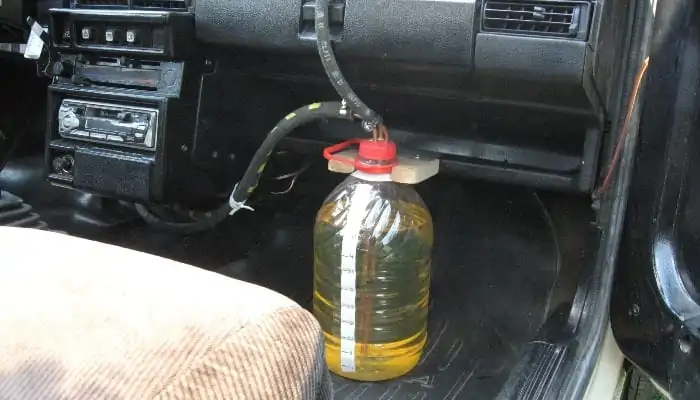
Jets for carburetors - tuning the main jet
Content
On injection engines, nozzles and a throttle valve are responsible for the preparation of the air-fuel mixture (you can read about the types and principle of operation of different types of nozzles here) In older car models, the fuel system is equipped with a carburetor.
For the portioned supply of fuel and air to the carburetor chambers, jets are responsible. What are these details, how are they arranged, how to clean and select them correctly?
What are carburetor jets?
There are two types of jets. Some are responsible for the portioned supply of fuel and are called fuel. Others are intended for air dosage - they are called air.
For each carburetor model, manufacturers make separate jets. They differ in the diameter of the holes. The volume of fuel and air entering the mixing chamber (quantity and quality of the air-fuel mixture) depends on this parameter.
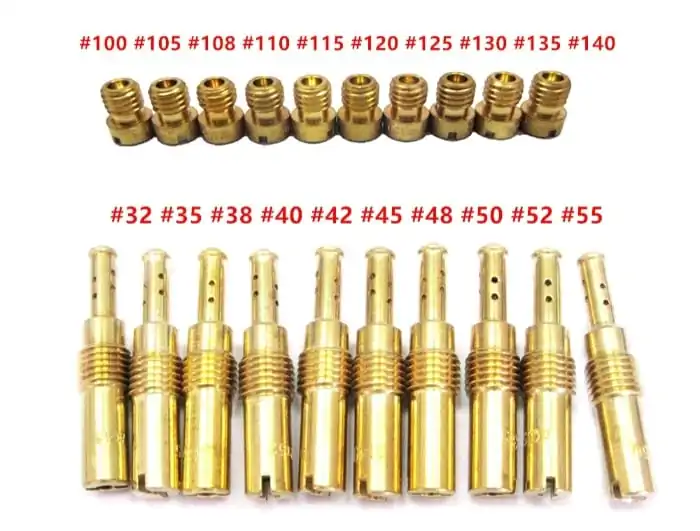
This part is made in the form of a small cork with a calibrated hole. A thread is cut on it, which facilitates a strong fixation in the well. Air elements are worn on emulsion tubes in which openings are made.
When changing the engine operating mode, its own quantity of air-fuel mixture is required. In this regard, each nozzle must have an appropriate performance or throughput. This parameter is influenced by several factors:
- channel length;
- diameter and number of holes (in the case of emulsion tubes);
- the quality of the "mirror" of the surface.
Even slight changes in these parameters can affect the motor characteristics. Basically, they cannot be diagnosed with a visual inspection of the carburetor. Some tuning studios and caring enthusiasts use these properties to increase engine power (other ways to increase engine performance are described in a separate article).
What are the jets responsible for?
In an atmospheric engine with a carburetor fuel supply system, the air-fuel mixture is formed and enters the cylinders under the influence of physical laws (the mixture is supplied by diluting air in the cylinder). In view of this, each nozzle should have ideal parameters.
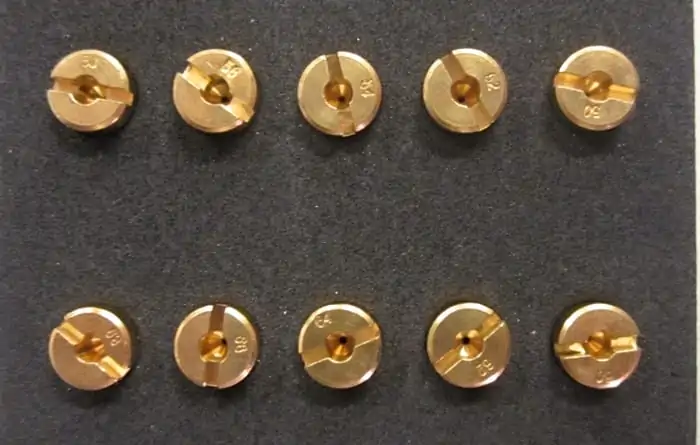
All elements have a special marking that indicates the throughput of their holes. This indicator is determined by the speed of passage of water, the pressure of which corresponds to a meter column, and is indicated by cubic centimeters per minute. This information will help in adjusting the carburetor to the desired performance.
Changing the capacity of the nozzles affects the quality of the PTS. If you increase the diameter of the holes of the air emulsion tubes, more air than fuel will enter the cylinders. This will adversely affect the power of the motor - to switch to a higher gear, it will need to be more untwisted. From this, it can overheat. But in this way you can save on fuel.
If you increase the diameter of the main nozzle (fuel), then this will significantly affect the enrichment of the air-fuel mixture. For example, an increase in the cross-sectional area by 10 percent will add 25% of productivity to it, but at the same time the car will become noticeably voracious.
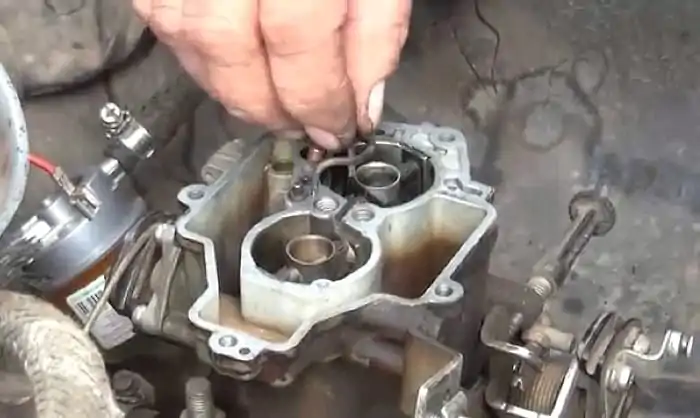
Lack of experience in tuning the engine with the modernization of the main jet can lead to excessive enrichment of the mixture. Such a quality of the military-technical cooperation will not catch fire if it enters the cylinders, since a sufficient amount of air is required for the combustion process. As a result, the “tuned” motor will simply fill the candles.
To change the fine tuning of the enrichment of the air-fuel mixture, you can use the design features of the carburetor. For example, the Solex models are almost identical, but the jets that are installed in them differ in performance. At the factory, this parameter is selected under motor volume. To add a few horsepower to the engine of your car, instead of standard jets, you can install those that are designed for a more productive carburetor.
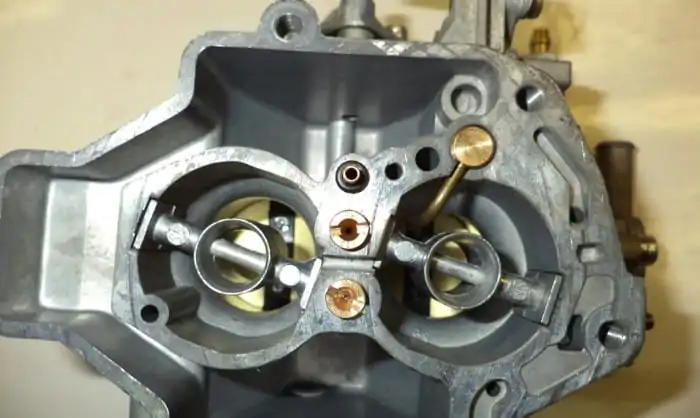
The fuel quality screw is also responsible for the dosage. It is located at the sole of the carburetor (Solex). With this element, you can adjust the number of revolutions of the engine idling. In this case, the volume of gasoline passed through does not depend on the performance of this part, but on the size of the gap, which is changed by turning the adjustment bolt clockwise (or in the opposite direction).
Types of jets
The jets differ from each other in purpose and location in the carburetor. Distinguish between fuel, compensation and air jets. A separate jet is also responsible for the idling operation - jet XX.
Each piece has its own size and a precisely calibrated hole. Depending on this parameter, the throughput of the jet will also be. So that during the repair it was possible to install the correct part, markings are applied to each of them. It is measured in cubic centimeters for the pressure of a 1000 mm high water column.
Typical malfunctions
The main malfunction of any jet, if it is not a factory defect, is the clogging of its hole. Even the smallest speck of dust is capable of completely or partially blocking the channel, which will certainly affect the performance of the carburetor.
The main reason for such malfunctions is poor quality of fuel or incoming air. Therefore, every motorist needs to pay enough attention to replacing the air and fuel filter.
Installing a part with a smaller hole will affect the enrichment of the air / fuel mixture. If it is a fuel jet, then the mixture will be lean, and if it is an air jet, it will be rich. Non-standard jets are used to change the characteristics of the motor. More agility or savings can be achieved. This is done by increasing / decreasing the amount of incoming fuel or air. Naturally, such upgrades affect the power of the power unit.
Self-adjustment
Before changing the jet to a new one, you can try to adjust the quality of the air-fuel mixture. To do this, you need to follow the following procedure:
- Warm up the motor to operating temperature;
- The carburetor has an idle adjustment screw. With its help, the revolutions are set at 900 rpm (we follow the tachometer). In this case, the suction must be completely removed;
- When the saturation screw is tightened, the mixture becomes lean, which reduces the engine speed to a minimum;
- This screw is unscrewed, and the average engine speed is adjusted.
The peculiarity of this procedure is that it can be performed as much as necessary until the revolutions can be adjusted perfectly.
Replacement
The new jet is installed in accordance with the vehicle manufacturer's recommendations. For different upgrades, manufacturers create correspondence tables for different part markings. Non-standard jets are installed depending on the expected parameters of the dynamics of the car.
Replacing the jets is easy, but time-consuming and tidy. The sequence of work is as follows:
- For convenience, the carburetor must be removed from the engine;
- If necessary, the gasket between the engine and the carburetor is replaced with a fresh one;
- Unscrew the carburetor cover fastener;
- You can unscrew both jets (air and fuel) using a flat screwdriver;
- The emulsion tube is removed from the air jet;
- New parts are selected according to the manufacturer's tables;
- Before installing new parts, they must be rinsed in a special tool;
- The carburetor is assembled and installed in the reverse order.
After replacing the jets, you need to adjust the idle and medium speed. It is also recommended to replace the fuel and air filters.
How to clean carburetor jets from plaque and dirt
The most common problem of all jets is bandwidth loss. Since their openings and cross-section should ideally correspond to the factory settings, even slight clogging can lead to unstable operation of the carburetor.
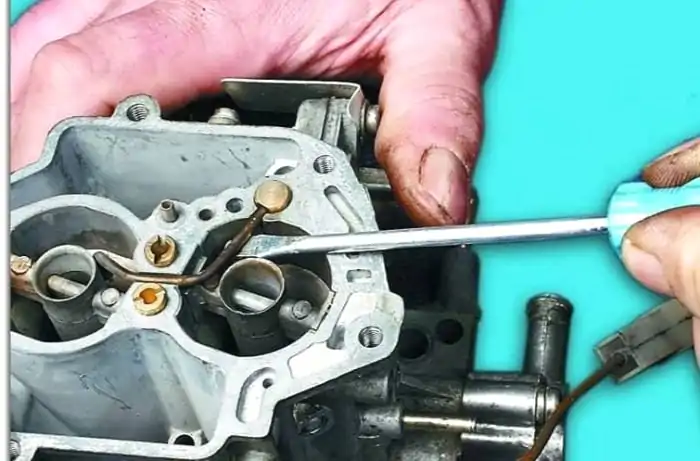
Here are common problems with unstable motor operation associated with jets:
- A slight failure for one to two seconds (the gas pedal is pressed gently, for example, when the car starts to move). During acceleration, as well as at idle, the problem disappears. Often this effect occurs when the outlet openings in the transition system of the 1st chamber are clogged. It may also indicate a malfunction of the accelerator pump.
- When you smoothly press the gas pedal, there is a noticeable failure or twitching (sometimes the engine may stall). If this happens at low and medium speeds, and the effect is eliminated by pressing the accelerator more strongly, then it is worth paying attention to the GDS fuel nozzle (main dosing system). It may be clogged or not fully wrapped. The problem may also be the clogging of the emulsion well or GDS tube in the first chamber. If such an effect appeared after the recent “modernization” of the carburetor, a fuel nozzle with a smaller cross section than the engine requires may have been installed.
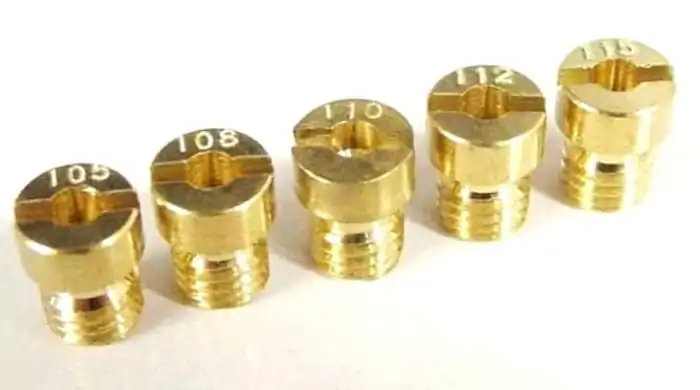
- At idle, failures are observed (as if the revs are "swinging"), unstable engine operation. This problem may be due to clogging of the SCX fuel nozzle (idle system) or the channels of this system.
- When the motor experiences high loads (vehicle speed is above 120 km / h), its power and throttle response are lost or a series of failures are observed (“swinging”). A possible reason is the clogging of channels, nozzles and an emulsion well with a GDS tube in the second chamber.
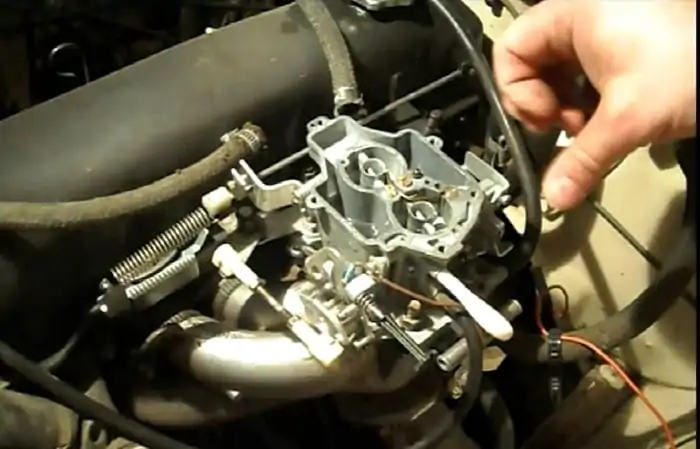
It is worth considering that the listed problems are not always associated with blockage of nozzles. Often, one of these effects is caused by suction of extraneous air due to poor sealing of the carburetor and additional elements (for example, the gasket ring of the EM valve of the XX system is broken or deformed), malfunction of the throttle valve, malfunction of the fuel system, etc.
Also, before you “sin” on a carburetor, you need to be sure that the ignition and fuel supply systems are working. Sometimes, this behavior can be observed in the event of a malfunction of the motor itself.
If the diagnosis showed that the cause of the unstable operation of the internal combustion engine was the clogging of the nozzles, then they should be cleaned. It is important to remember that the procedure cannot be performed with coarse and sharp objects (brush or wire). This is because the nozzles are mainly made of non-ferrous metals, so inaccurate mechanical stress can scratch the “mirror” of the part or slightly increase the diameter of the holes.
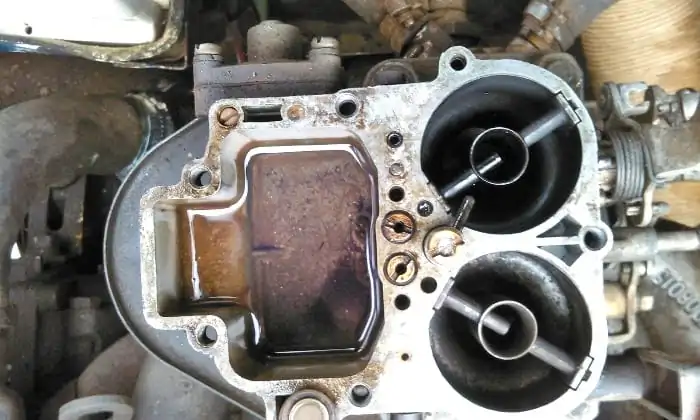
Jets can become clogged or deteriorated for the following reasons:
- low quality gasoline;
- untimely maintenance of the fuel system and carburetor;
- specialists performing maintenance, repair or carburetor adjustment do not have sufficient knowledge of the intricacies of the operation of this device.
There are two methods for cleaning carburetor jets: surface cleaning and thorough cleaning.
Surface cleaning of nozzles
This method is used for periodic maintenance of carburetors. In this case, a special spray is used to clean the carburetors. The procedure is quite simple:
- the "pan" or the case with the air filter is removed (you should be careful with the studs that are screwed into the carburetor - the thread in it is very delicate and can easily break);
- air and fuel jets get out;
- the idle solenoid valve is removed;
- an aerosol is sprayed into all carburetor openings through which air or gasoline passes;
- nozzles are blown;
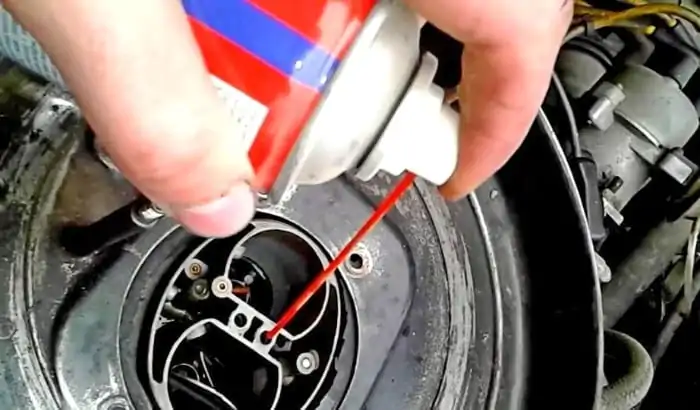
- wait about 5 minutes, then install the jets back and start the engine;
- since the EM valve is disconnected, the choke lever must be pulled out;
- cleaning occurs not only at idle, it is necessary to work a little with the gas pedal, so that the engine runs in different modes and all carburetor jets are used;
- some, when performing the procedure with the engine running and the gas pedal depressed (so that the engine runs at revs above average), additionally spray the agent into the chambers.
After the carburetor has been superficially cleaned, all disconnected elements are reinstalled. As for the solenoid valve, it is installed with the engine running. First, it is twisted by hand, and then with the key until the engine is about to stall. It is necessary to catch that line while the motor maintains stability, but the valve is tightened to the maximum level. At the end, the suction handle is removed.
Thorough jet cleaning
While surface cleaning should be performed periodically, a thorough procedure is carried out in cases where the above steps did not bring the desired result.
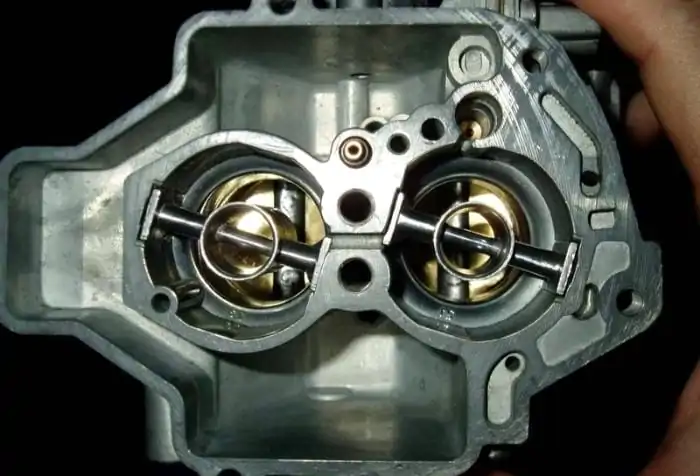
In some cases, a solid particle falling into the float chamber moves under the fuel nozzle and partially or completely closes the hole. In practice, this is as follows. At speed (often after driving through bumps) the engine dramatically loses speed and generally stalls.
On the spot, this problem can be solved by performing a partial cleaning of the carburetor - unscrew the fuel nozzle and blow it. But at the same time, it is likely that such a grain of sand was not alone, so thorough cleaning of the carburetor should be performed.
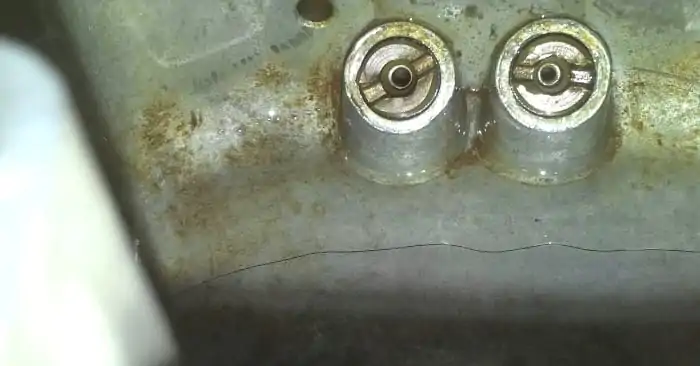
In this case, the device cover is removed and all cables and hoses are disconnected. To clean clogged nozzles and carburetor channels, use compressed air and special cleaning agents.
Replacing carburetor jets
The jets are not always clogged due to foreign particles entering the cavity. More often this occurs due to the accumulation of resins and various impurities. In view of this, many experts recommend periodic cleaning (no more than after 30 thousand mileage), and if it does not help, then replace the nozzles.
The second reason for installing other elements is the tuning of the power unit. In this case, the change in parameters occurs due to the adjustment of the composition and quality of the air-fuel mixture. If you install a fuel jet of a larger cross section, the mixture will be more enriched, and the installation of a larger air analog will lead to its depletion.
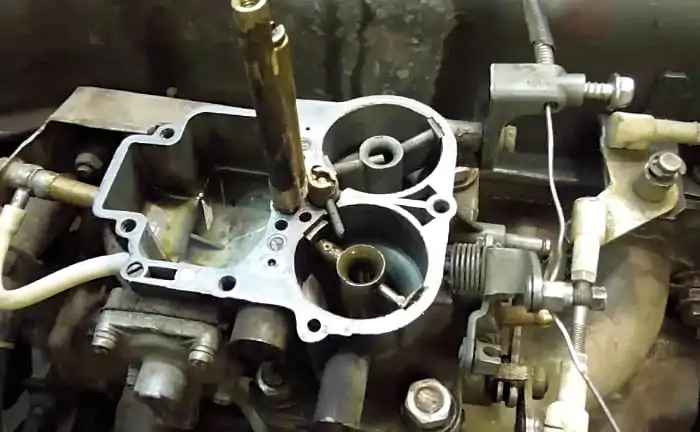
Changing the parameters of the gas-turbine engine affects all modes of the motor: from the minimum load (idle), to the full opening of the throttle. This will increase the consumption of cars regardless of driving style. The air jet changes the composition curve of the PTS. In this case, the power of the unit, and with it the gas mileage, will increase / decrease depending on the opening angle of the throttle.
However, for proper tuning, you must accurately select the performance of the jets. This is the only way to achieve smooth and stable operation of the engine even at low loads.
Replacement of the nozzles can be done independently. To do this, the following actions are performed:
- The air filter housing is removed;
- Dismantling of all hoses, as well as the suction cable and the air damper drive, is carried out;
- The carburetor cover is removed;
- Unscrew air jets (they are put on emulsion tubes);
- In the lower part of the emulsion wells fuel jets are located, they are unscrewed with a screwdriver. You can remove them with the ampoule from the handle - it is soft and will not damage the mirror of the inner surface of the nozzle;
- If you decide to completely remove the carburetor to flush it, the inlet manifold opening must be closed so that no debris gets into it.
During the replacement of the nozzles, it is worthwhile to conduct a visual inspection of the seals in parallel, since their deformation and gusts also affect the operation of the device. After replacing the nozzles and servicing the carburetor, all elements are installed in the reverse order.
Solex 21083 carburetor fuel jet table
For Solex carburetors, there are several categories of jets that allow you to achieve the desired engine characteristics:
- For those who prefer a quiet driving style, the “economical” option is suitable;
- Fans of increased dynamics and optimal flow can stay at "moderate" or "normal";
- For maximum tuning, "sports" jets are installed.
Not always installing a fuel jet with a minimum cross section leads to gasoline savings. If the lean mixture enters the cylinders, the driver will have to open the throttle more strongly, from which a larger volume of the mixture is sucked.
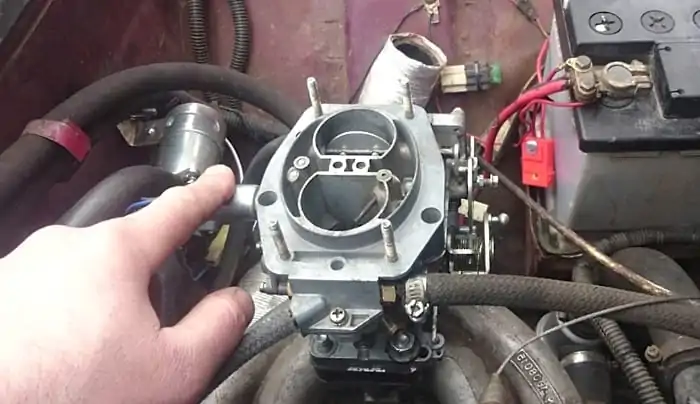
Here are the nozzles used in Solex 21083 carburetors (the performance of elements for each carburetor modification is indicated in cm3/ min):
| Type of jets | 21083-1107010 | 21083-1107010-31 | 21083-1107010-35 | 21083-1107010-62 |
| Fuel GDS (1st camera) | 95 | 95 | 95 | 80 |
| Fuel GDS (2st camera) | 97,5 | 100 | 100 | 100 |
| Airborne GDS (1st camera) | 155 | 155 | 150 | 165 |
| Airborne GDS (2st camera) | 125 | 125 | 125 | 125 |
| Fuel CXX | 39-44 | 38-44 | 38-44 | 50 |
| Aerial CXX | 170 | 170 | 170 | 160 |
| Fuel Transition System (2nd Camera) | 50 | 50 | 80 | 50 |
| Air transition system (2nd camera) | 120 | 120 | 150 | 120 |
Most of the nozzles shown in the table are interchangeable, which makes it possible to refine the carburetor by installing an analog with a lower or greater performance.
The following jets can be replaced:
- Fuel GDS;
- Air GDS;
- Fuel CXX.
The remaining elements are part of the design of the device and cannot be turned out to be replaced by others.
The carburettor is modernized due to the individual selection of elements for a particular motor. Before tuning, it is necessary to check the ignition system, adjust the valves, check the gaps in the candles, replace the fuel and air filter, clean the carburetor.
The procedure is performed in the following sequence:
- An empty straight stretch of road with a length of about 5 km is selected.
- The nozzles are selected (for the main dosing system of the first chamber, the second is activated at high speeds, therefore, it is not touched) with different throughputs in accordance with the desired parameters (increased power or reduced fuel consumption). A graduation of 2 ml is done in advance on a 100-liter empty plastic bottle. for each division.
- The engine should idle for about 10 minutes. If the road is far from the garage, you can configure the system immediately after the trip.
- The inlet hose is disconnected from the gas pump. Instead, another hose is installed on the suction fitting, which is lowered into a bottle of clean gasoline.

- A section of the road passes at a speed of 60-70 km / h. After stopping, the fuel level in the bottle is checked. This is a test meter. This parameter will determine the change in the performance settings of this motor.
- The "pan" and carburetor cover are removed. The main fuel jet changes to an analogue with a different capacity (smaller to reduce consumption or larger to increase power). Do not install immediately the most different element. Improvement is best done smoothly, until the appearance of failures or other unnatural motor reactions.
- A repeated measurement of the flow rate is made (paragraph 5).
- As soon as “failures” appear while driving, the previous nozzle should be installed. Then the idle system is set up, since fuel consumption can be reduced thanks to the SCX jet.
- The replacement of this element should be carried out until the effect of triple engine appears. In this case, the previous nozzle with a high performance value is installed.
In addition to replacing the fuel and air nozzles to increase engine power, you can use other methods to upgrade the carburetor: by finalizing the accelerator pump or installing other emulsion tubes, slightly modifying the diffusers and the throttle.
About the selection of jets on the plate
Often on the Internet you can find different tables of correlations between fuel and air jets, according to which some recommend choosing elements for “perfect” tuning.
In fact, such tables are far from reality, as they often show the fuel / air ratio, but other important factors are not indicated, such as the diameter of the large chamber diffuser (the smaller the diameter, the higher the suction speed). An example of one of these tables is in the photo below.
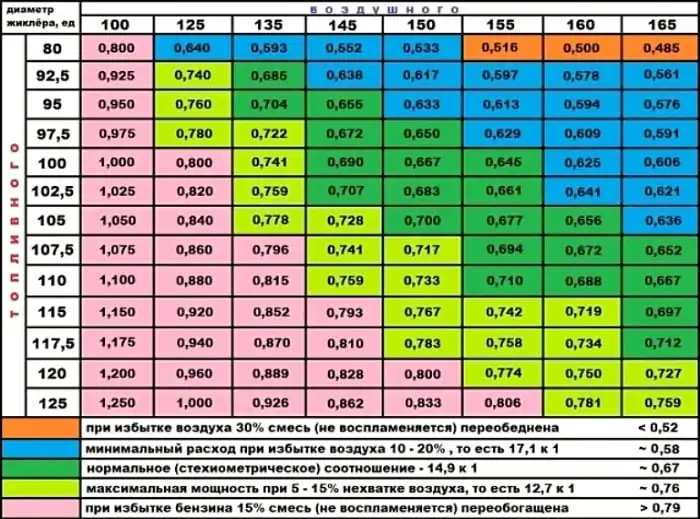
In fact, setting up a carburetor is a very complicated procedure, which only units are given to understand. If there are difficulties with the smooth operation of the engine, but the ignition and fuel supply systems are in good condition, and surface flushing has not changed anything, then it is better to contact an intelligent specialist and not to torment the car.
Related videos
At the end of the review, we offer a short video on how to achieve dynamism from a conventional carburetor:
Questions and answers:
Where is the jet in the carburetor? Fuel jets are screwed into the well of each carburetor chamber. Air jets are installed at the top of the emulsion chamber. Each part is calibrated in accordance with the characteristics of the internal combustion engine.
Which jet is responsible for what? They change the composition of the air / fuel mixture entering the cylinders. The increased cross-section of the main jet (fuel) enriches the VTS, and the air jet, on the contrary, depletes it.
What are the jets on the Solex carburetor? On Solex 21083, jets 21 and 23 (1st and 2nd chambers) are used. This is the diameter of the holes. Below is marked 95 and 97.5, respectively, and the numbers correspond to their throughput.

